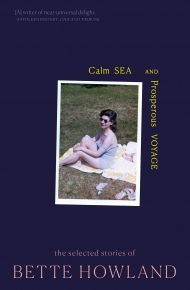Stet?
• Ed Roberson • October 1, 2013
What goes on in the final weeks as we're closing an issue? Lots and lots of questions, from the profound to the mundane to the incredibly nit-picky. And sometimes it's the smallest questions that provoke the most interesting answers. In APS 10, it was a question for Ed Roberson about a space in his poem "Moon Jar, Century Unclear." We asked if we could post the exchange here.
Hey Ed, I hope you're well. We're finishing up the new issue, and my proofreaders keep querying the space in the fourth stanza of your poem, so I thought better safe than sorry. Attached are your proofs—would you confirm that the space in the line "down from the outer layers inward into—" is supposed to be there? Thanks! Anne
Hi Anne, No problem, yes, the space belongs there, but it is probably better to explain why it is so necessary to be there by showing what it does:
Together with the enjambment after "itself" in line 9, the space after "down" in line 10 produces a quartet of four voices, three syntactically complete sentences and one parenthetical fragment or aside, within the reading of the one sentence.
"Archeological glass breaks itself." The surreal Krazy Kat comic of glass hitting itself on the head with a brick is an extreme way of carrying forward the idea from the first two stanzas that all the hands that have worked the glass are secondary to what the glass does itself by its own natural processes. That's the work of the enjambment.
Carrying the line forward into the next syntactic unit, "Archeological glass breaks itself down," seems a restatement of the enjambed line 10, except it now has the tone of the violence and wonder (craziness?) that natural processes can take in our view. Blocking off that syntactic unit is where the space, "lacuna," comes into play.
Not a comma, the space doesn't impede the idea of "down from," and instead acts like the pause the reader hears in the implied line 10, "down (meaning) from the outer layers inward." So the space not only marks the syntactic unit, its pause structures an embedded parenthetical aside.
The line as it has run so far, "Archeological glass breaks itself down from the outer layers inward," adds up to an attempt to lay out by way of such structure, not just the information, but the clarification and the experience of the steps within this process of glass becoming "archeological."
The full unit, the sentence does not come to completion and rather, ends in a dash. That dash introduces the present with the direct appeal to a live sensual experience, "Feel..." and drops the whole of that history, that epochal time, as the moon, in the reader's hand. In the reader's experience of reading the poem.
Whew! This poetry stuff is some heavy lifting. I think I might have to lie down and take a nap. All the best to you, Anne.
Yrs.,
EdR
P.S. It turns out the same question came up in Ed's class right after he answered it for us: “Funny thing is that just after I sent the reply to you, I had occasion to use that explanation in my poetry writing class at Northwestern. A young woman said, ‘This may be a stupid question, but what do those spaces really do?’ I explained that it wasn't a stupid question at all (sometimes they are just afraid to ask the great simple questions). I told her about our conversation and turned on my computer. The whole class has a copy and is in on our discussion now. It was a great class....”
Back to Top
Author
Ed Roberson is the author of eight books of poetry, including the forthcoming To See the Earth Before the End of the World (Wesleyan University Press). He is a visiting artist in the English department of Northwestern University.
Categories
Archive
About
A Public Space is an independent, non-profit publisher of the award-winning literary and arts magazine; and A Public Space Books. Since 2006, under the direction of founding editor Brigid Hughes the mission of A Public Space has been to seek out and support overlooked and unclassifiable work.
Featured Title

"A ferocious sense of engagement... and a glowing heart." —Wall Street Journal
Current Issue

Subscribe
A one-year subscription to the magazine includes three print issues of the magazine; access to digital editions and the online archive; and membership in a vibrant community of readers and writers.
Newsletter
Get the latest updates from A Public Space.
